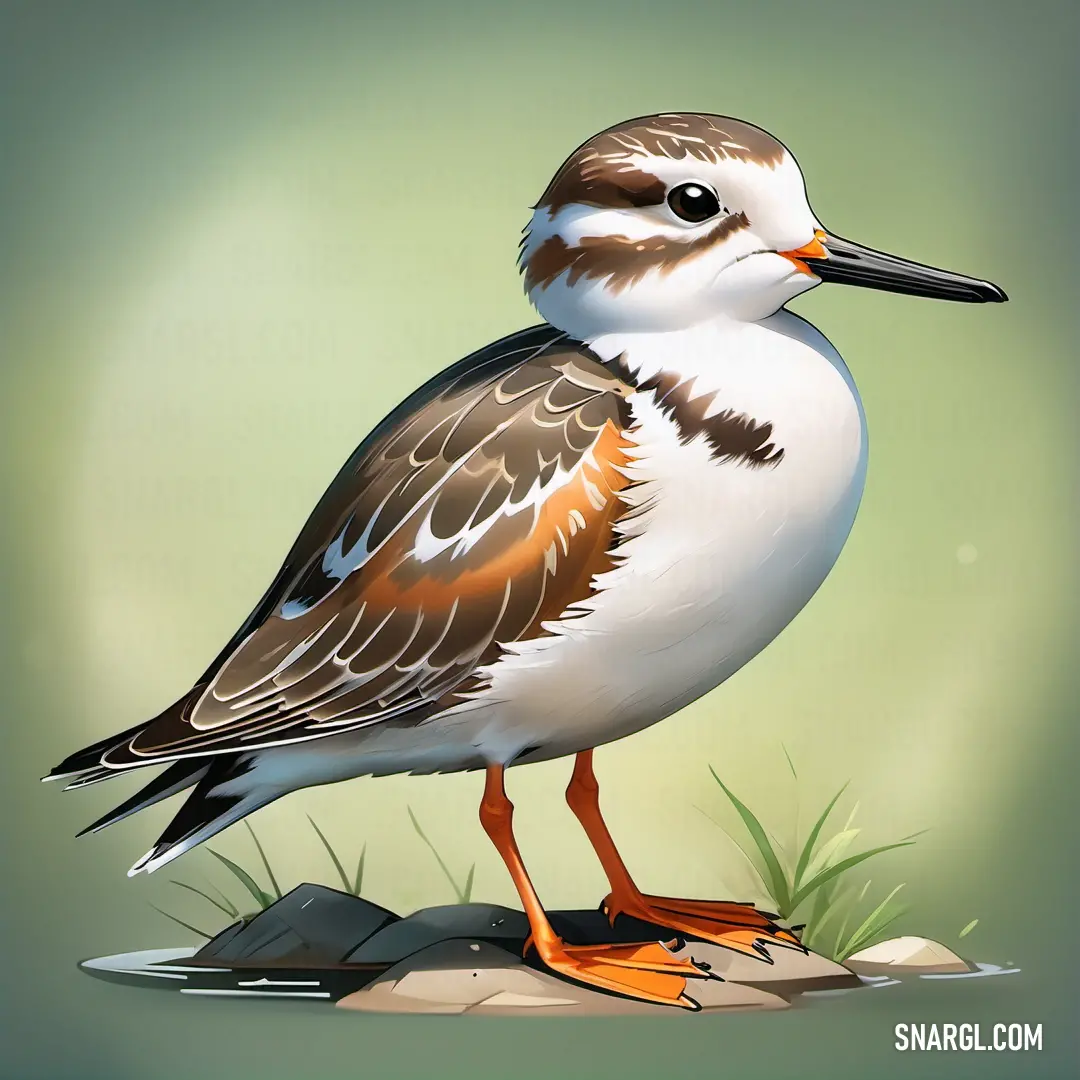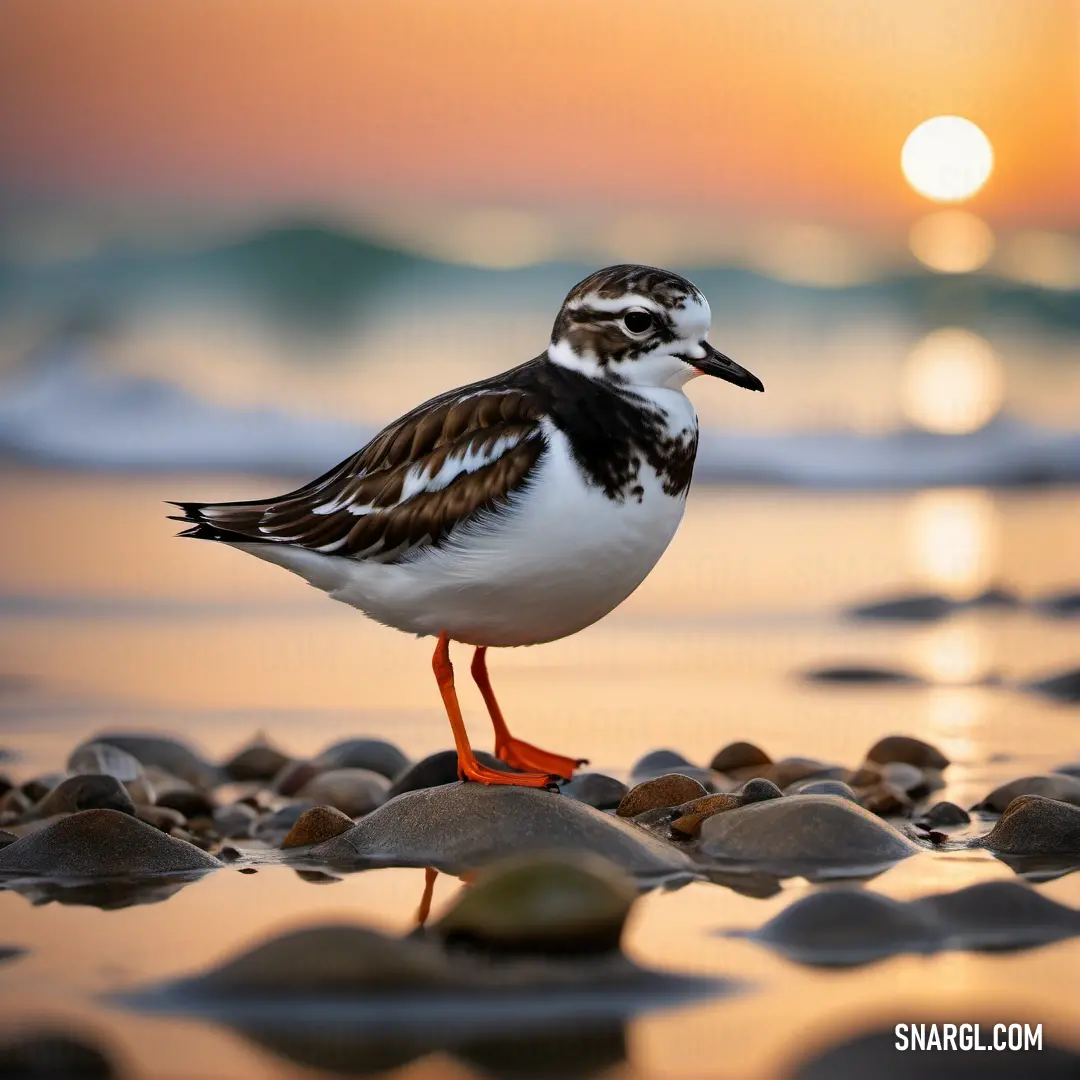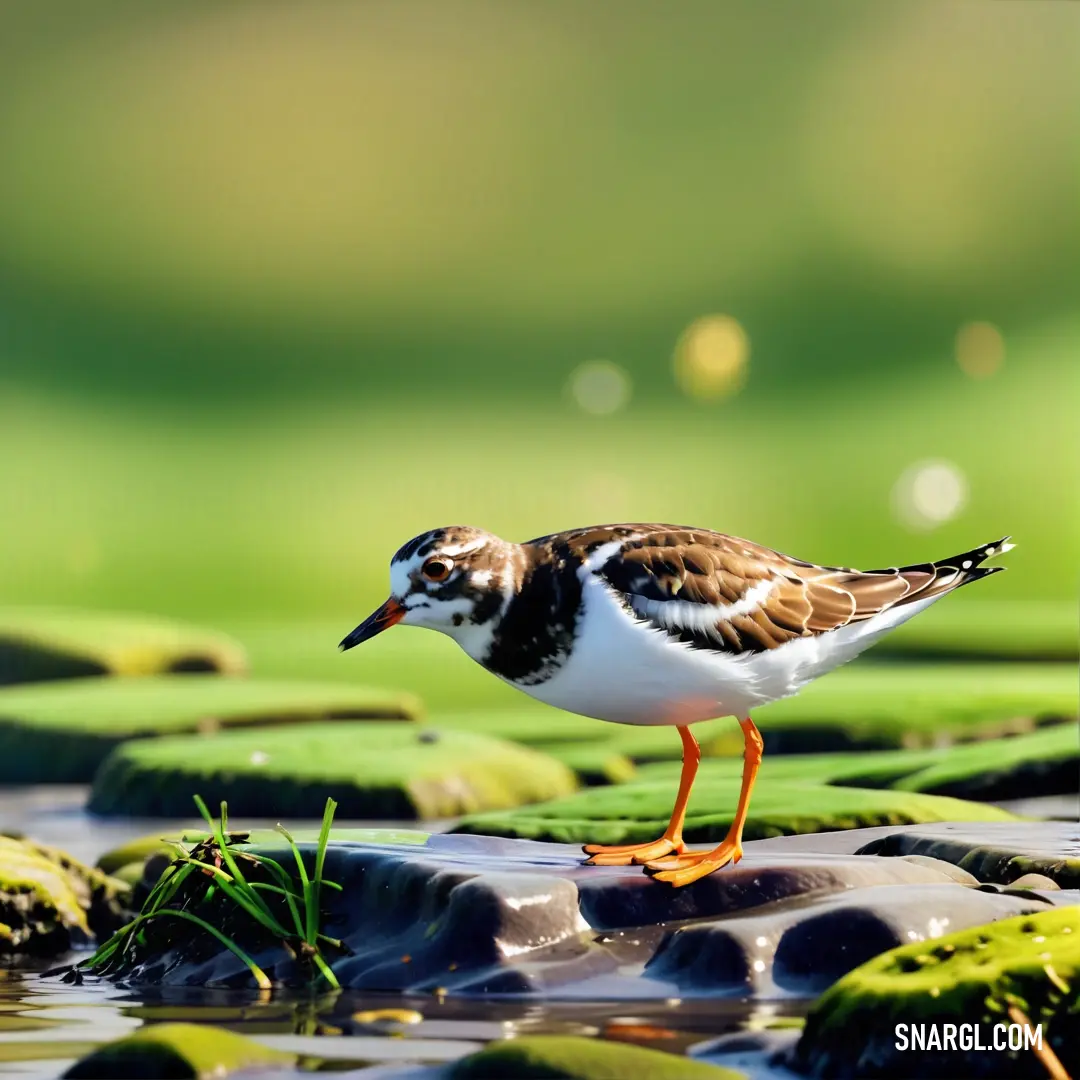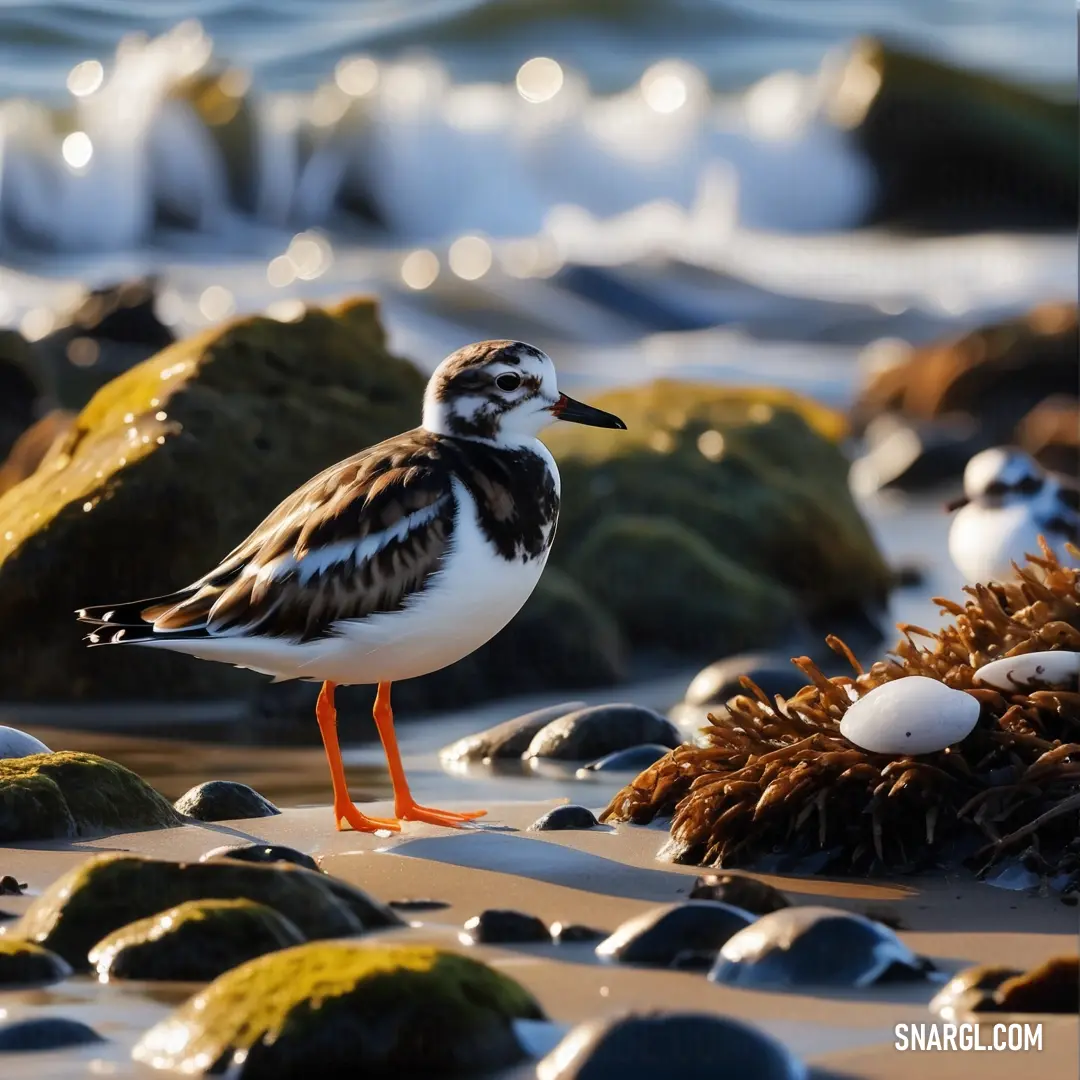On the rugged coastline of Driftwood Bay, where the waves crashed against the cliffs and the sea breeze carried whispers of ancient secrets, lived Finnley, a marine biologist with a passion for exploring the mysteries of the ocean. Finnley's loyal companion was Cash, a fearless turnstone with feathers like dark jewels and an unyielding curiosity for the strange and unusual.
One chilly autumn morning, as the first light of dawn painted the horizon in hues of pink and gold, Finnley and Cash received an unexpected visitor. A local fisherman named Gus had discovered something unusual while hauling in his nets - a peculiar, oversized wool ball that had drifted ashore. The wool ball, tangled and weather-worn, was unlike anything anyone had seen before.

The turnstone stands on a solitary rock, surrounded by vibrant green grass, showcasing its unique blend of colors against nature’s peaceful backdrop.
Intrigued by the mysterious find, Finnley and Cash decided to investigate. With Cash perched on Finnley's shoulder, they set off for the beach where Gus had left the wool ball. As they arrived, the sight of the enormous, tangled wool ball greeted them. It was an odd sight, resembling a giant, knotted nest made entirely of thick, colorful wool.
Finnley examined the wool ball closely, noting its intricate patterns and the strange, almost hypnotic colors that shifted in the sunlight. "This is quite unusual," Finnley mused. "It doesn't seem to be of natural origin. Let's find out where it came from."
Cash, ever the adventurous spirit, fluttered around the wool ball with keen interest. The turnstone's sharp eyes caught a glint of something shiny nestled within the fibers. With a series of excited chirps, Cash pecked at the wool, trying to unravel the mystery hidden inside.
As Finnley carefully unwound the wool ball, they discovered a series of strange symbols and markings embedded within the wool. The patterns were intricate, resembling ancient runes or codes. Finnley's scientific mind raced, recognizing the symbols as something akin to ancient maritime charts or maps.
"This wool ball seems to be a kind of puzzle," Finnley observed. "The symbols could be a map or a guide to something hidden. Cash, let's see if we can decipher this."

This turnstone enjoys the peace of dawn or dusk on the beach, its surroundings bathed in soft golden light as the ocean stretches endlessly behind it.
With Cash's help, Finnley began to unravel the wool ball, carefully documenting each symbol. The turnstone's enthusiasm and determination were evident as Cash fluttered and pecked, occasionally letting out a triumphant chirp when a particularly tricky knot was undone.
As they worked, the sun climbed higher in the sky, casting a warm glow over their discovery. The unraveling of the wool ball revealed a hidden compartment containing a small, ornate box. The box was engraved with more symbols and was sealed with an intricate lock.
Finnley and Cash, both excited and curious, carefully opened the box. Inside was a beautiful, old-fashioned compass and a weathered parchment. The parchment detailed a map of the coastal region, marked with several key locations and a series of clues leading to a treasure hidden somewhere along the shoreline.
"This is incredible!" Finnley exclaimed. "It looks like we've stumbled upon a centuries-old treasure hunt."
Cash let out a joyful chirp, clearly eager to embark on this new adventure. Together, Finnley and Cash followed the map's clues, which led them to various landmarks along the coast - a hidden cave, an ancient lighthouse, and a secluded cove.

With the sun shining brightly overhead, this Turnstone stands proudly on a rock, surveying the calm waters and the rocky shoreline, a perfect snapshot of a peaceful coastal moment.
Each location revealed more clues and pieces of the puzzle, and as they pieced them together, the mystery of the wool ball began to unfold. The final clue led them to a secluded, rocky outcrop where, hidden beneath a stone, they discovered a small chest filled with golden coins, old jewelry, and artifacts from a bygone era.
The discovery was celebrated by the local community, who were fascinated by the historical find. Finnley and Cash were hailed as heroes for their adventurous spirit and their dedication to uncovering the secrets of the past. The wool ball, now a legendary relic of their adventure, was proudly displayed in a local museum, and its tale became a cherished story in Driftwood Bay.
And so, in the coastal town of Driftwood Bay, the story of Cash and the enigmatic wool ball lived on as a testament to the thrill of discovery and the boundless curiosity that drives us to explore the unknown.






